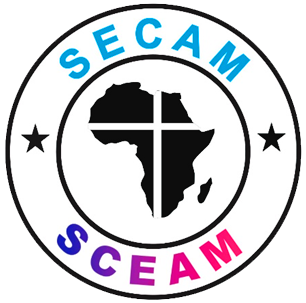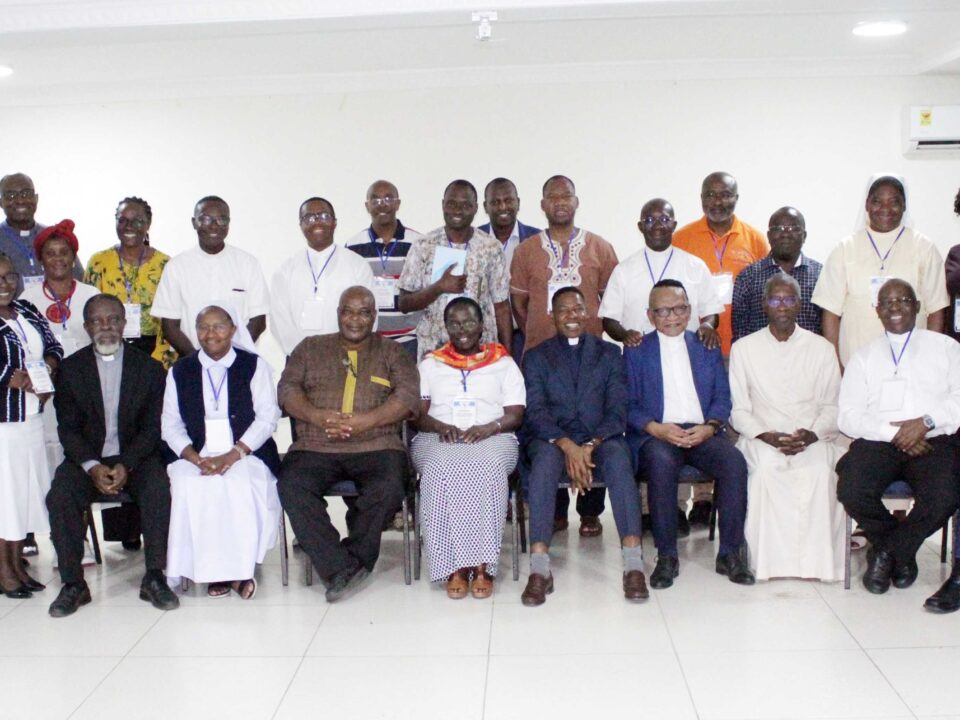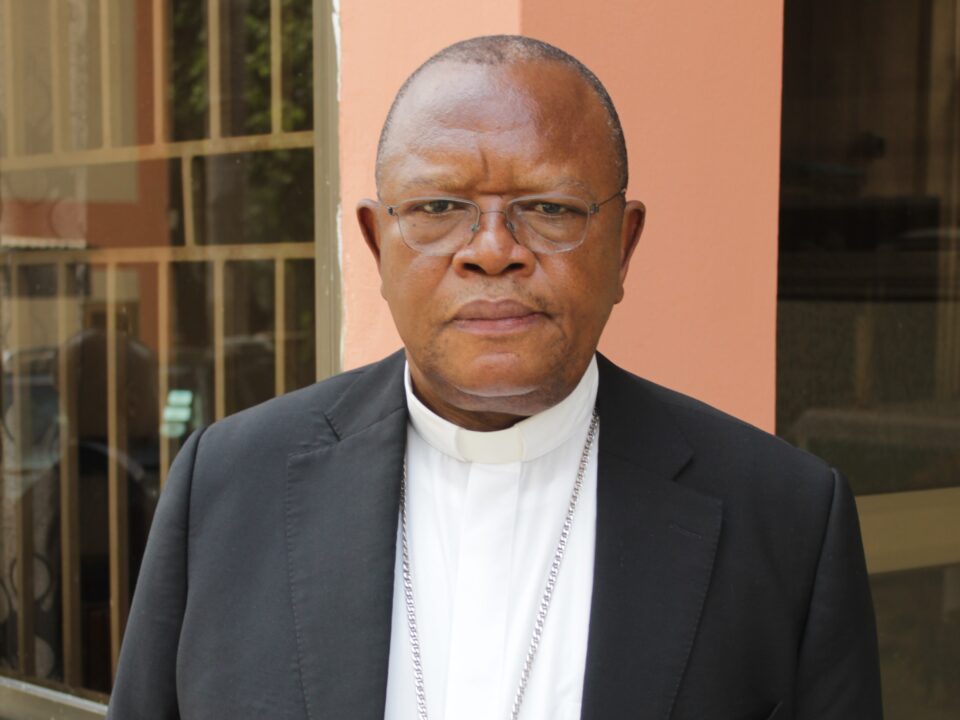- Contact us on - Contactez-nous sur - Contacte-nos em
- +233-30-277-8867/8
- +233-30-277-2548
- secam@secam.org
SECAM PRESIDENT’S REPORT – 17th SECAM PLENARY ASSEMBLY
Your Eminences
Your Excellencies
PREAMBLE
It is a great honour for me to make this report to the 17th SECAM Plenary Assembly, since my election in Kinshasa (DRC) in July 2013. I then humbly accepted your confidence in me and pledged to do my best as the President of SECAM. I pledged to make SECAM stronger by intensifying our relations with the Holy See and sister organizations in other continents. I promised that SECAM will continue to respect the principle of subsidiarity in working with the Regions and, when necessary, the National Conferences. This report, is therefore a reflection of what we have tried to do in these past three years.
It would be remiss, on my part, if I do not, from the outset, pay tribute to my brother Bishops in the Standing Committee whose commitment and dedication made whatever we achieved in this period possible. In the same vein, my appreciation goes to our Staff at the Secretariat who continued with their diligent work in spite of the well-known difficulties they face, financially, to make ends meet.
I would also like to wholeheartedly recognize the invaluable assistance we got from our cooperating partners. You all know that the funds we get from membership fees each year are only sufficient to meet half of the annual recurrent budget for SECAM. We are only able to meet our monthly obligations in terms of salaries, statutory meetings, and general maintenance. All our programmatic activities are donor funded.
With these few words of introduction, I turn to the main report.
-
HANDOVER
Immediately after the closure of the 16th Plenary Assembly, a handover meeting was arranged between the out-going and in-coming Standing Committee. I sincerely thank my predecessor, His Eminence Polycarp Cardinal PENGO, and his team, for a job well done for the smooth and professional manner in which the handover was done.
-
VISIT TO EUROPE
Given that the 16th Plenary Assembly had just adopted the first ever five-year Strategic Plan, which was meant to run from 2013-2018, our immediate challenge was to operationalize this Strategic Plan. The Secretariat had developed a three-year Action Plan in line with the two major Commissions, that is, Evangelisation (and all other pastoral related activities) and Justice, Peace and Development (with all the social related programmes for human development). Details of how the plan was implemented will be dealt with through the various departmental reports that will be presented to you.
The SECAM Presidency and all Senior Staff of the Secretariat went to Europe, thanks to sponsorship from MISSIO Aachen, to meet key partners to help us finance the activities enumerated in the Strategic Plan. During the visit, the SECAM Delegation had high level meetings with MISSIO Aachen and Misereor (in Aachen) and the CIDSE Directors in Luxembourg. In between, the delegation also took time to visit the German Episcopal Conference.
In summary, the discussions bore the fruit of making MISSIO Aachen the key partner for SECAM for pastoral related activities. At Misereor, a contract for the Third Phase of the Good Governance Project was signed and pledges to contribute to the financing of the same Good Governance project were received from various member organizations of CIDSE after meeting them.
-
AD LIMINA VISIT
In February, another milestone was achieved when SECAM went to the Holy See for its first ever Ad Limina visit. Fruitful discussions were held with various dicasteries and the Secretariat of State. The highlight of the visit was the Audience with the Holy Father, Pope Francis, on February 6, 2015. On your behalf, the Standing Committee let the Holy Father know that SECAM had proposed to celebrate the African Year of Reconciliation from 29th July 2015 to 29th July 2016. We also extended an invitation to the Holy Father to join SECAM in celebrating our Golden Jubilee in 2019 (Uganda). A Report of this is available in your Conference bags.
-
SECAM STATUTES
In order to fulfil the mandate given to us by the 19th Plenary Assembly, we indeed did submit to the Holy See, the Statutes that were adopted in Kinshasa (2013), requesting for a Recognitio. The Congregation for the Evangelization of the Peoples sent back the Statutes with some minor comments. Our Canon Lawyers took into consideration those comments, and sent the Statutes back to Rome. You shall hear the details of this process from the Canonists later on since this issue is on the Agenda of this Plenary Assembly.
-
THE SYNOD ON THE FAMILY
SECAM played a key role in the activities before and those that followed the Extraordinary (2014) and substantive Synod on the Family (2015).
-
For the Extraordinary Synod: SECAM, through the Evangelization Commission, was able to organize various consultative meetings and seminars involving Bishops, theologians, and other pastoral agents, with a view of enhancing the participation of the Church in Africa in the Extraordinary Synod of Bishops in October 2014. A booklet entitled, “Africa to the Extraordinary Synod On Family: Organic Pastoral Solidarity and Contribution”, was produced in five languages (French, English, Portuguese, Spanish and Italian), and sent, in soft copy, to all National and Regional Episcopal Conferences of Africa and Madagascar and to the African Cardinals during the week of September 15 to 20, 2014. The printed text was subsequently distributed to African Synod Fathers by a group of theologians that accompanied the SECAM Bishops to the Extraordinary Synod on the Family.
-
CCEE-SECAM: The Standing Committee and a select number of European Bishops, met in Maputo (Mozambique), at the end of May 2015, to reflect together on the Theme of “The joy of the family”. See Message of the Meeting in Appendix.
-
Preparations for The Synod on the Family: From 8-11 June 2015, in Accra, SECAM organized a Workshop for Synod Fathers from Africa on the theme “The Family in Africa: What Experiences and What Contributions to the XIV Ordinary Assembly of the Synod of Bishops? The workshop attracted 49 participants of which 32 were Synod Fathers. The workshop was animated by a Scientific Committee with the support of the staff of the Secretariat. A book was produced that was distributed during the Synod and copies are still available for the Bishops who did not receive a copy. At the same workshop, a joint declaration was signed for submission to the UN General Assembly “Given the current developments on the African continent, in view of the September 25 – 27 New-York Summit for the adoption of a “post-2015 global development agenda”.
-
SECAM DAY
I am happy to announce that on 29th July each year, we have started celebrating the SECAM Day at the level of the Secretariat. I hope that you also have started doing the same in your Regions, Conferences and Dioceses. We already agreed that a special collection is to be done on the Sunday closest to July 29 and sending 75% of the collection to SECAM.
-
THE YEAR OF RECONCILIATION
The Year of Reconciliation was launched to start on 29th July 2015 through to July 29, 2016. A special Poster was produced by the Communications Office and distributed to many Conferences. I am sure that we shall hear more on how this special year of reconciliation was celebrated when we listen to the Regional Reports.
-
JOINT STATEMENT ON COP21
In the light of Pope Francis’ Encyclical, Laudato Si, SECAM joined all the continental bodies of the Catholic Church and the Holy See in signing a joint Statement on Climate Change addressed to the Heads of State during their Cop 21 Summit in France, in November 2015. The Secretary General signed on my behalf since I could not travel to Rome at the time due to pressing issues.
-
APPOINTMENT OF THE CEPACS PRESIDENT
After a long time of searching the Standing Committee finally was able to find a willing person in the person of Most Rev. Emannuel BADEJO, Bishop of Oyo (Nigeria) who generously accepted to serve as Bishop President of CEPACS pending ratification by this August Assembly. He is already working hard to revive CEPACS and promote the Catholic News Agency for Africa (CANAA), issues on which he will elaborate in his Address.
-
SECAM AU OBSERVER STATUS
In the period under review, SECAM has finally signed the MoU with the African Union as an Observer. We have designated the Archbishop of Addis Ababa as the SECAM representative to interact with the AU. A Liaison Office manned by a SECAM Program Officer has been opened to work closely with the Archbishop of Addis Ababa. The programme Office will say more on this issue. Suffice to say that this Plenary Assembly needs to ratify the designation of His Eminence Berhaneyesus D. Cardinal SOURAPHIEL CM, as the official representative for SECAM at the AU.
-
THE NATURE OF SECAM
Starting from Congo Brazzaville, when I attended the Plenary Assembly of the ACERAC Region, a reflection on the “Nature of SECAM” was initiative which I would like that the 17th Plenary discusses substantively. This is in the context of SECAM having been thinking about the new pastoral challenges that arise in our Church in Africa and how to position itself adequately to respond to those challenges. The promulgation of the Apostolic Exhortation, Evangelii Gaudium, by Pope Francis, and his call in Articles 16 and 32, for Conferences to rethink their roles, it became pertinent that we, as Bishops of African need to reflect on how we can speak together through a clearly defined and well-structured Institution. See the brief reflection attached to this report that I have had the opportunity to present to AMECEA and RECOWA-Cerao besides ACERAC.
-
NETWORKING
In the period under review, SECAM continued to interact with key Dicasteries of the Holy See, sister Conferences, especially CCEE and FABC, and our cooperating partners. We still need to strengthen these ties. We have sought to implement the Statutory obligation of working through the Regional Conferences. This was our approach when we held the Standing Committee meeting in February this year in Nairobi (Kenya).
-
PAPAL VISIT TO AFRICA
Though SECAM, per se, was not directly involved in the recent Papal visit to Africa, we managed to send teams to Uganda and Central African Republic. We are very grateful for the warm and fraternal support we received from the Episcopal Conferences of Uganda and the Central African Republic. We were able, though, to send a message of pastoral solicitude to the Holy Father on his first visit to our lovely continent.
-
CHALLENGES
The main challenge that SECAM faces is insufficient funds to be able to function normally. For instance, at the moment, we are unable to review salaries for the lowest paid staff members. Main activities we are required to fulfil (Standing Committee Meetings) are sometimes held on credit, putting SECAM in a precarious situation of incurring debts while having very low income flows.
A tragic event befell us on 11th November 2014 when the 1st Deputy Secretary General of SECAM, Rev. Fr. Pierre Ile Bongonda BOSANGIA, suddenly collapsed in his office and died shortly thereafter upon arrival at the nearby hospital where he was rushed. May His Soul Rest in Eternal Peace. He only served the Secretariat for one year in which he acquitted himself very well. We sincerely thank the Archdiocese of Kinshasa who had kindly released him to come to SECAM. It took us almost a year to look for a replacement in the person of Rev. Fr. Edouard Melchior MOMBILI, from the Archdiocese of Kisangani (DRC).
These are some of the issues I thought I would raise in my Report leaving the details of the full activities we have done since 2013 to the Secretariat Reports.
+ Gabriel MBILINGI
Archbishop of Lubango (Angola)
SECAM President
Cotonou, 17 June 2014
RE: Nature of SECAM
Your,
Eminences
Excellences
For more than ten (10) years, our Symposium of Episcopal Conferences of Africa and Madagascar (SECAM) has been thinking about its nature and the new challenges that arise in our Catholic Church in Africa.
I wish to refer to the Plenary Assembly in Dakar in 2003 where the publication of certain documents by Pope Saint John Paul II, pushed our Church to reposition itself and allow ourselves to be challenged on its nature and its action. As the Preamble of the Statutes adopted at that meeting reminds us, we can make reference to Ecclesia in Africa, which defines, quite rightly, the Church as the Church-family of God; Novo Millennio Ineunte, the document which launched the new millennium with all that it would pose as consequences. Already, the Assembly in Dakar felt the necessity for all the African Episcopate to meet at least once every nine (9) years.
The celebration of the Second Special Synod for Africa, leading to the signing of the Post-Synodal Apostolic Exhortation Africae munus on African soil, in November 2011, in Ouidah (Benin), was also a good opportunity to strengthen this reflection on the nature and the challenges of the Church in Africa, for a concrete and effective commitment. The plenary Assembly in Kinshasa in July 2013, has responded to these expectations by confirming the text of Dakar and adopting the new elements brought to the texts governing our continental Institution.
At the time when we were ready to send the text of the new Statutes and By-Laws to the Holy See for the ‘recognitio‘, which was the result of our Plenary Assembly in Kinshasa, we, providentially, received the Apostolic Exhortation of Pope François which addresses, inter alia, the question of the status of the Conferences of Bishops: Evangelii Gaudium.
Two passages from this document can guide us in our reflections in rethinking the nature of our SECAM:
No. 16: “I was happy to take up the request of the Fathers of the Synod to write this Exhortation. In so doing, I am reaping the rich fruits of the Synod’s labours. In addition, I have sought advice from a number of people and I intend to express my own concerns about this particular chapter of the Church’s work of evangelization. Countless issues involving evangelization today might be discussed here, but I have chosen not to explore these many questions which call for further reflection and study. Nor do I believe that the papal magisterium should be expected to offer a definitive or complete word on every question which affects the Church and the world. It is not advisable for the Pope to take the place of local Bishops in the discernment of every issue which arises in their territory. In this sense, I am conscious of the need to promote a sound “decentralization”.”
No. 32: “Since I am called to put into practice what I ask of others, I too must think about a conversion of the papacy. It is my duty, as the Bishop of Rome, to be open to suggestions which can help make the exercise of my ministry more faithful to the meaning which Jesus Christ wished to give it and to the present needs of evangelization. Pope John Paul II asked for help in finding “a way of exercising the primacy which, while in no way renouncing what is essential to its mission, is nonetheless open to a new situation”. We have made little progress in this regard. The papacy and the central structures of the universal Church also need to hear the call to pastoral conversion. The Second Vatican Council stated that, like the ancient patriarchal Churches, Episcopal Conferences are in a position “to contribute in many and fruitful ways to the concrete realization of the collegial spirit”. Yet this desire has not been fully realized, since a juridical status of episcopal conferences which would see them as subjects of specific attributions, including genuine doctrinal authority, has not yet been sufficiently elaborated. Excessive centralization, rather than proving helpful, complicates the Church’s life and her missionary outreach.”
These are the two quotations that may guide us in thinking about an African episcopate able to speak together, within a clearly defined and well-structured Institution.
While keeping the existence of our Episcopal Regions, besides the wealth of our continent, is this not the time for us to transform our Symposium of Episcopal Conferences of Africa and Madagascar, an expression that would, moreover, be adequate with Church Law?
Moreover, when we look at other regional structures, while respecting the specificity of each continental situation outside the Episcopal Federation of Asia, Latin America has a Latin American Episcopal Council (CELAM) and Europe has a Council of Episcopal Conferences of Europe (CCEE).
By deeply analysing the remarks by Pope Francis, we will realise well that “beneficial decentralization” and “authentic doctrinal authority” which he speaks about, will be effective only in an African Church that is a very clear and well-structured Ecclesial Subject.
While waiting for the results of your reflections, from now until the end of the month of September 2014, I greet you fraternally and I would like to invite us all to be very well prepared as we go to the Extraordinary Synod of Bishops, convened by Pope Francis, on the crucial and important theme of family.
Most Rev. Gabriel MBILINGI
Archbishop of Lubango
President of SECAM




